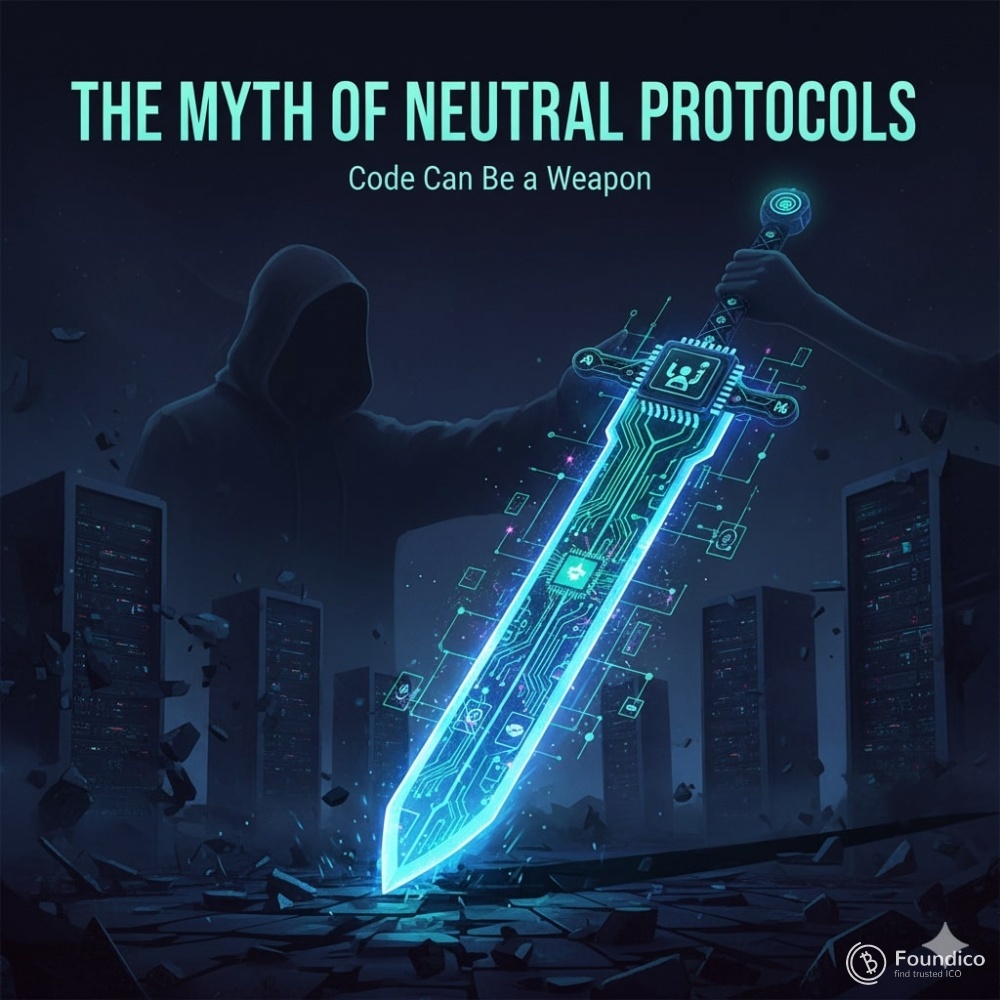The Myth of Neutral Protocols: Code Can Be a Weapon

By Dr. Pooyan Ghamari, Swiss Economist and Visionary Author
For too long, we have operated under the comforting delusion that software protocols are neutral. The prevailing wisdom suggests that code, by its very nature, is a set of logical instructions devoid of bias, merely a tool that can be used for good or ill by its human operators. This perspective, however, is not only naive but dangerously misleading. In the increasingly interconnected and digitalized world, it is imperative to confront a starker truth: The Myth of Neutral Protocols is a fallacy; code itself can be, and often is, a weapon.
As a Swiss economist and a keen observer of the digital frontier, I contend that this weaponization of code is not always overt. It rarely manifests as a flashing "kill switch" or a blatant act of censorship. Instead, it is embedded in design choices, architectural decisions, and the subtle incentivization structures that shape human behavior within digital ecosystems.
The Invisible Hand of Protocol Design
Just as economic policies are never truly neutral—always favoring certain outcomes, certain actors, and certain distributions of wealth—digital protocols carry inherent biases from their inception.
-
Censorship and Control Architectures: Consider protocols that govern communication. While ostensibly designed for efficient information transfer, they can be deliberately structured with choke points, identification requirements, or centralized control mechanisms that enable surveillance, data harvesting, or outright censorship. A protocol might allow for free speech, but its underlying design can make that speech easily trackable, attributable, or even suppressible by powerful entities. This isn't about how someone uses the code, but how the code itself makes specific uses easier or harder.
-
Economic Disenfranchisement and Exclusion: In decentralized finance (DeFi) or other tokenized ecosystems, protocols dictate who can participate, what actions are permissible, and how value is created and distributed. Parameters like minimum staking amounts, transaction fees, or collateral requirements are not neutral technical choices; they are economic policies embedded in code. They can inadvertently or deliberately exclude vast segments of the global population, consolidating power and wealth within a select group who meet the protocol's often capital-intensive entry barriers.
-
Weaponized Transparency and Obfuscation: Transparency is often hailed as a universal good in blockchain and open-source communities. Yet, protocols can be designed to make certain data transparent while selectively obfuscating other critical information. This asymmetry of information—built into the code—can be weaponized. Imagine a protocol that makes individual user financial activities public by default, but allows powerful institutional actors to operate with a layer of privacy. This imbalanced transparency can be used for predatory behavior, market manipulation, or targeted exploitation.
-
Governance by Code: The Immutable Power Structure: In self-executing smart contracts and DAOs, the rules encoded within the protocol are the law. If these rules are designed to favor a small group of founders, early investors, or a specific voting bloc, then the protocol itself becomes a tool for maintaining that power structure indefinitely. "Code is law" can also mean "code is an immutable weapon of entrenched power."
Beyond Naiveté: Recognizing the Battlefield
Recognizing code as a potential weapon requires a profound shift in mindset. We must move beyond the simplistic notion of technological neutrality and embrace a critical analysis of protocol design.
-
Scrutinize Design Intent: Every default setting, every parameter, every required input within a protocol carries an implicit bias. We must ask: Whose interests does this design serve? Who benefits, and who is disadvantaged?
-
Demand Ethical Engineering: The responsibility of software architects extends beyond functionality and security. It encompasses the societal impact of their creations. Ethical considerations must be baked into the development process, not bolted on as an afterthought.
-
Empower Protocol Literacy: Just as financial literacy is crucial, so too is protocol literacy. Citizens of the digital age must understand that the "rules of the game" are not handed down by nature but are coded by humans, with human biases.
The idea that "code is neutral" offers a convenient shield for those who benefit from its inherent biases. It allows powerful actors to deflect responsibility and maintain control under the guise of technological objectivity. As we construct the foundations of our digital future, it is paramount that we dismantle this myth. Code is a powerful creative force, but like any powerful tool, it can be crafted and wielded as a weapon, shaping our societies, economies, and freedoms in profound and often invisible ways. Recognizing this is the first step toward building truly equitable and just digital ecosystems.
Dr. Pooyan Ghamari is a Swiss economist and visionary author with a focus on world econometrics, AI, and the architecture of decentralized systems.

 Pepenode - Pepenode is a utility meme coin token designed to power the Pepenode ecosystem, a gamified virtual mining platform for meme coins
Pepenode - Pepenode is a utility meme coin token designed to power the Pepenode ecosystem, a gamified virtual mining platform for meme coins